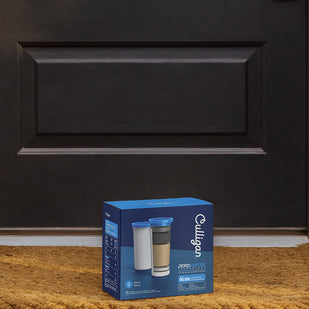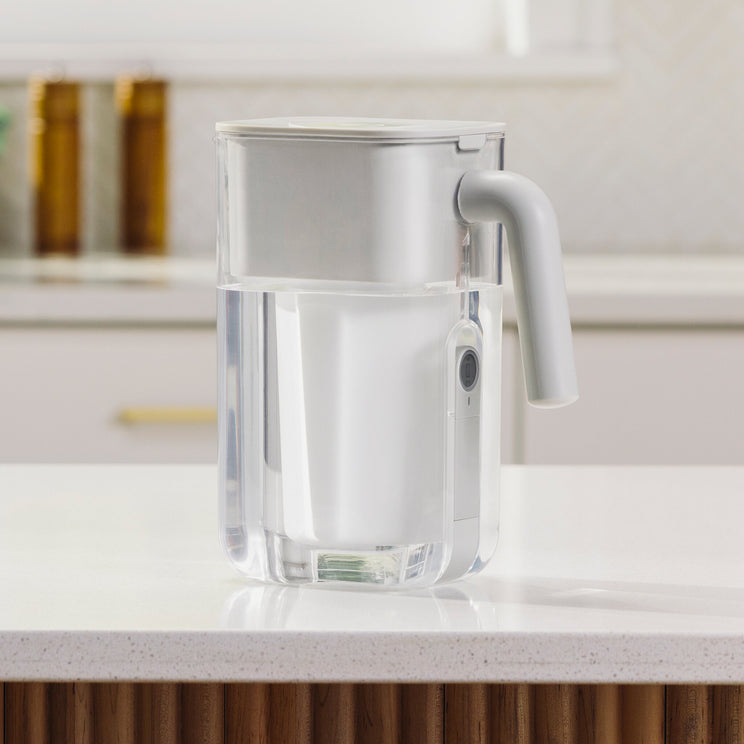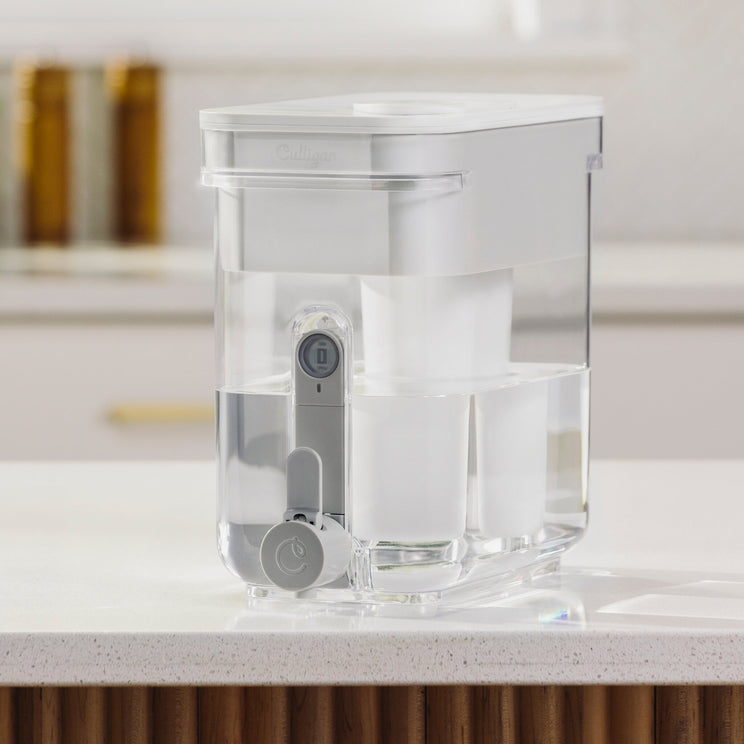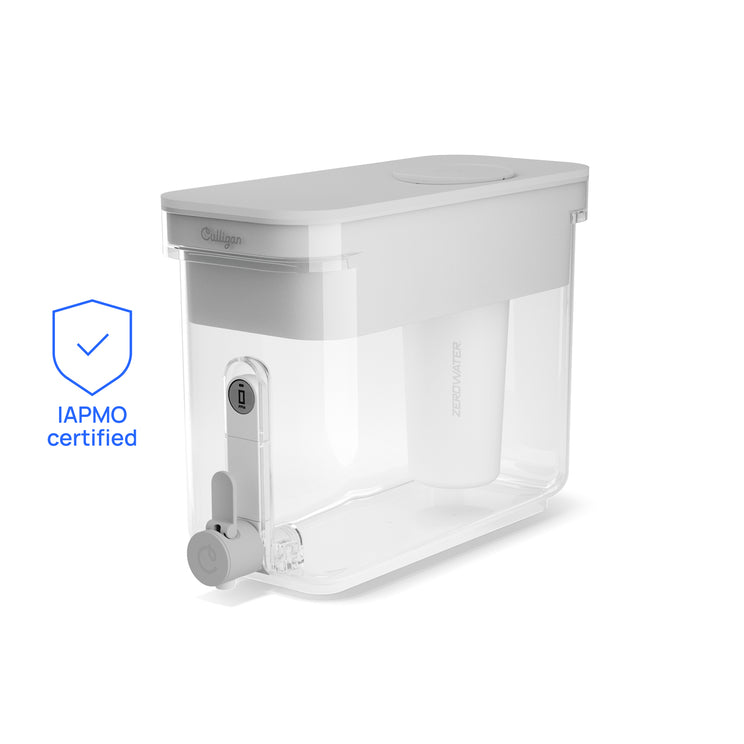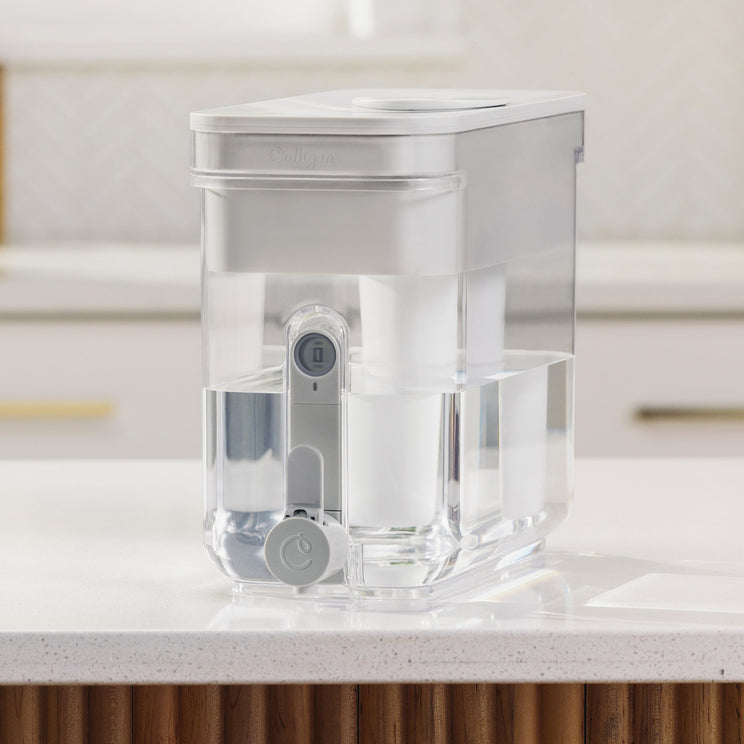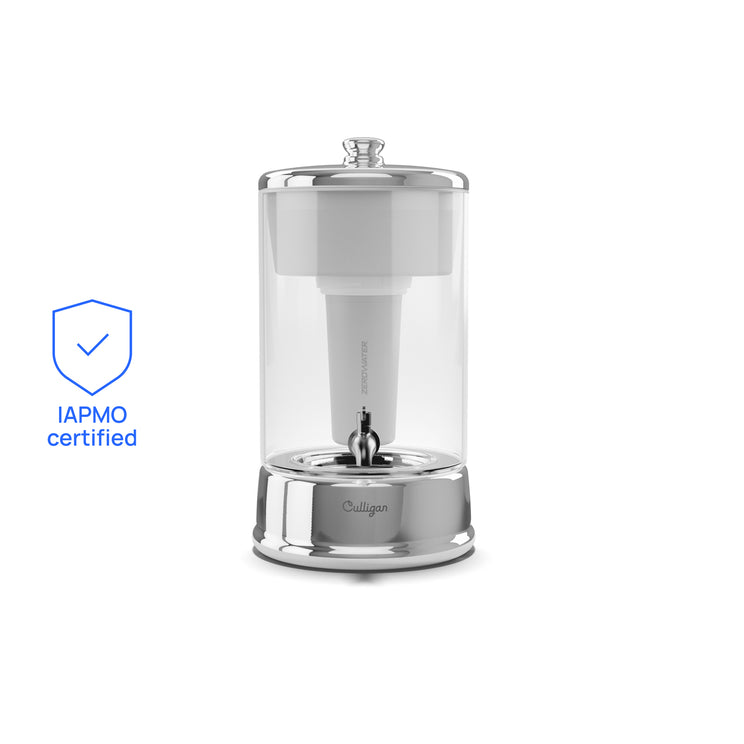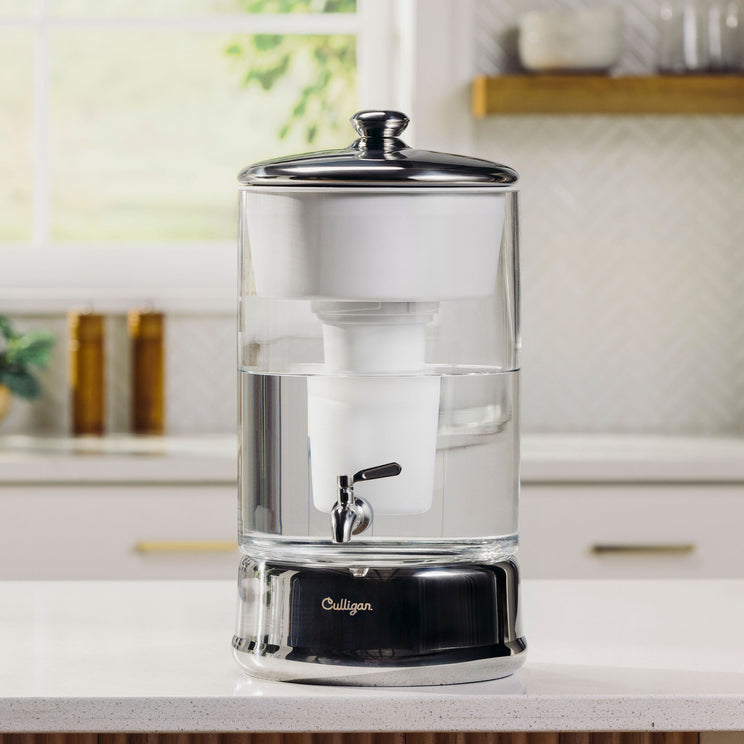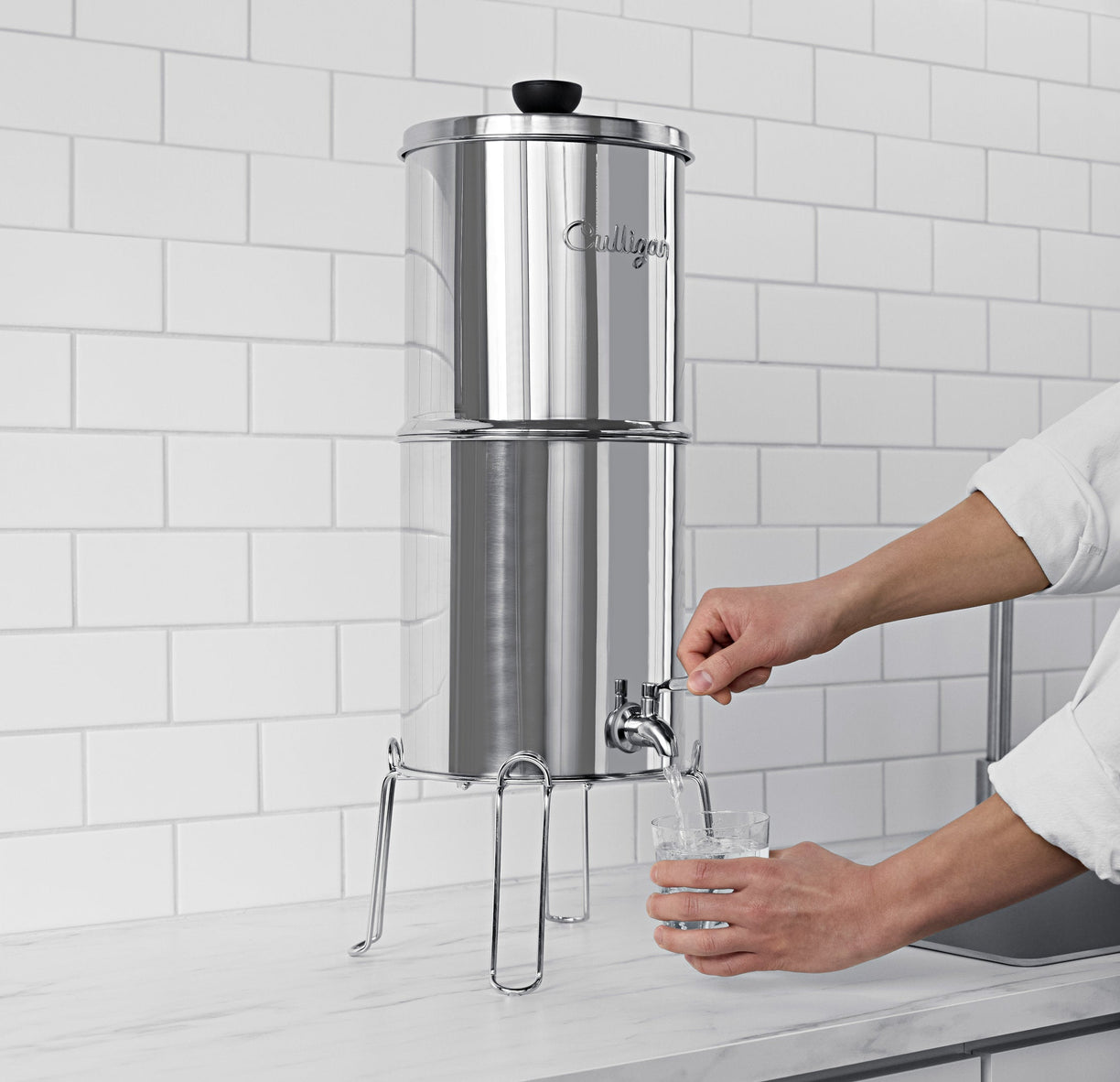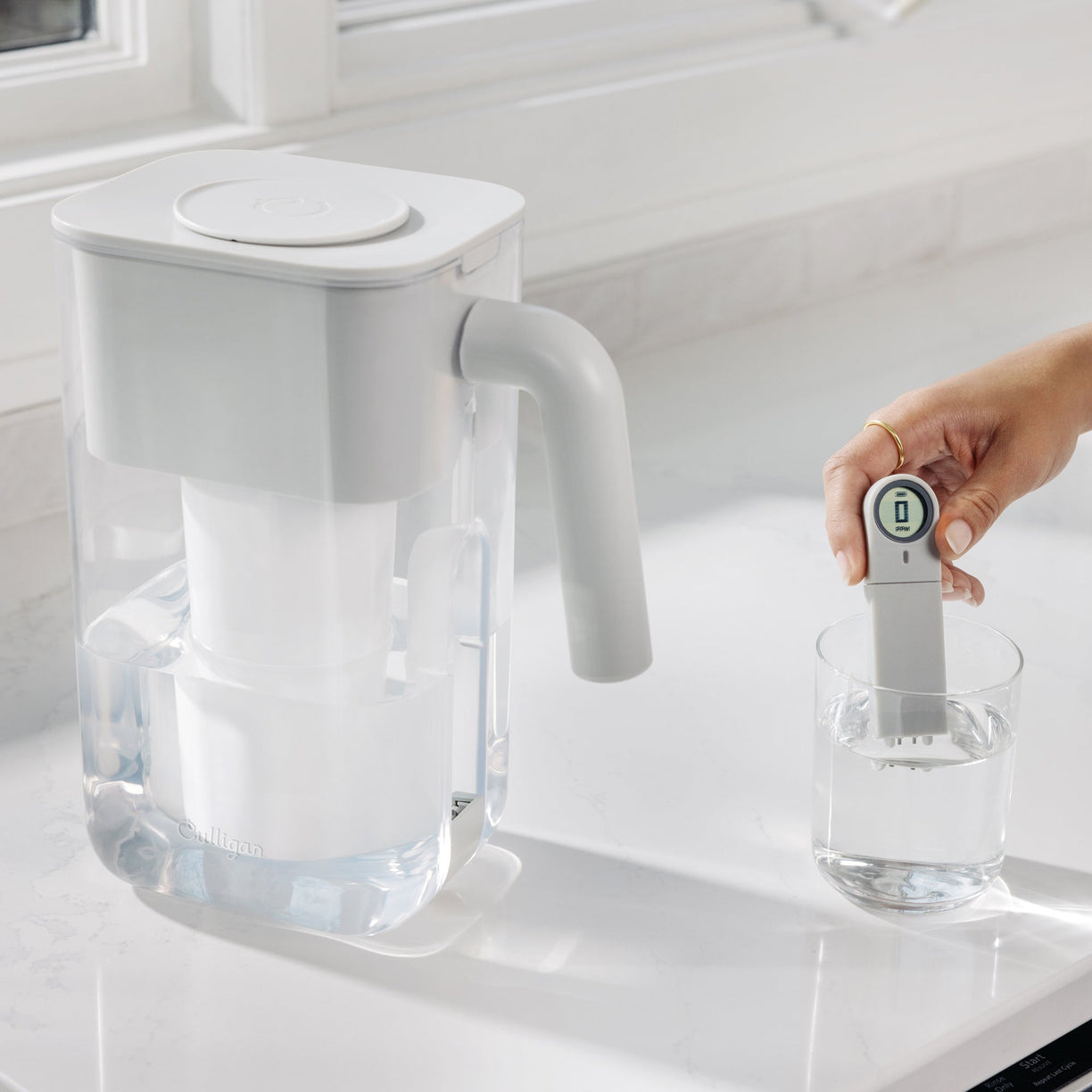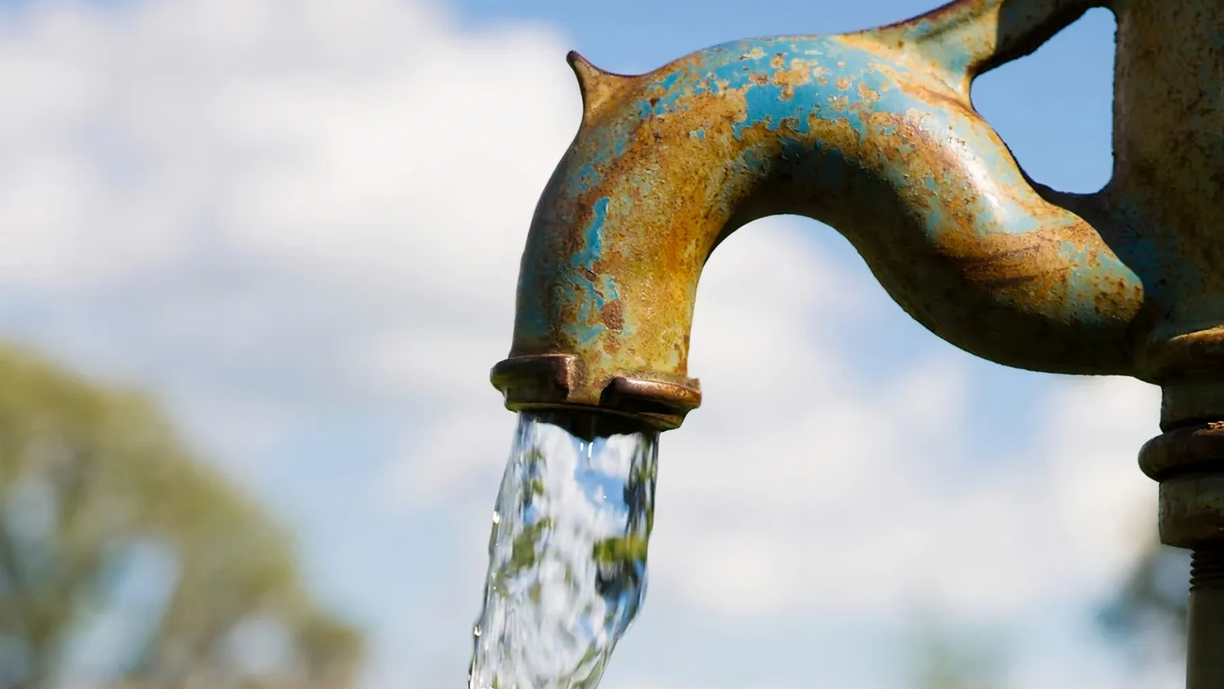When we think of something lasting forever, we usually picture something like diamonds or good memories, not chemicals in our drinking water. But, unfortunately, that’s the reality for many communities across the United States.
PFAS, called “forever chemicals,” are industrial compounds that have quietly made their way into the nation’s water supply. And because they don’t break down easily, they linger for decades and pose a serious threat to our health and environment.
Let’s unpack what these chemicals are, how forever chemicals get in water and food sources, and what you can do to reduce your exposure and protect your family’s drinking water.

What Are PFAS and How Do They Get Into Water?
PFAS (short for per- and polyfluoroalkyl substances) are human-made chemicals that have been used since the 1940s to make everyday products resist heat, oil, stains, and water. You’ll find them in products such as nonstick pans, waterproof jackets, stain-resistant carpets, and even fast-food wrappers.
The problem? PFAS are practically indestructible. They don’t break down naturally in the environment OR in our bodies. Instead, they build up over time and spread through soil, groundwater, and even rain. Sources like landfills, firefighting foams used at airports and military bases, and runoff from treated materials all add to the contamination.
Once PFAS get into the environment, they don’t stay put. They travel easily through water and air, often ending up in places far from where they started, making these “forever chemicals” a widespread issue across the U.S.
Why PFAS Are So Hard to Regulate
One of the biggest challenges with PFAS is the sheer number of them. There are thousands of different compounds, each with slightly different properties. Many were created long before environmental testing standards existed, which means regulators are still working to understand their full impact. Even as certain types are phased out, newer versions often replace them, and they can be just as persistent.
To make matters worse, PFAS produced decades ago are still present in soil and water today. Because these chemicals don’t easily break down, managing and removing them from the environment is an enormous ongoing challenge.
And while the environmental impact is troubling enough, the potential health effects of long-term PFAS exposure are what really raise concern.
The Health Risks of PFAS Exposure
The CDC and other health agencies have found clear links between PFAS exposure and serious health effects, particularly with long-term exposure.
Health Risks for the General Population
For most people, the main route of exposure is through contaminated drinking water or food. Over time, PFAS can accumulate in the bloodstream, leading to a range of health effects. Research has identified connections between PFAS exposure and health risks such as:
-
Increased cholesterol levels
-
Reduced antibody response to certain vaccines
-
Changes in liver enzymes
-
A possible link to kidney and testicular cancer
While the research is ongoing, one thing is clear: PFAS don’t belong in our drinking water, and minimizing exposure is a smart move for anyone concerned about long-term health.

Health Risks for Expecting Mothers and Babies
Expecting mothers and young children are particularly vulnerable to PFAS exposure. Studies have shown these chemicals can interfere with healthy pregnancy outcomes and early development.
Potential health effects include:
-
Preeclampsia
-
Increased risk of miscarriage and preterm birth
-
Lower birth weight
-
Delayed cognitive development and lower IQ
-
Increased risk of obesity and metabolic issues
These findings are especially concerning given how common PFAS contamination has become and how difficult these chemicals are to remove once they enter the water supply.
According to a recent EPA and USGS National Water Quality Laboratory study, nearly half of the U.S. population may be receiving tap water contaminated with PFAS. That’s millions of Americans potentially exposed to “forever chemicals” every single day, simply by drinking the water coming straight from their faucets.
How to Protect Your Family from PFAS Contamination
At this point, you might be wondering if PFAS can be filtered out of water and, if so, how you can remove them from your water. Thankfully, there are practical, effective solutions that can help reduce or eliminate contamination so you can feel good about drinking the water in your home.
Culligan’s advanced water filtration systems are specifically engineered to reduce “forever chemicals” and other common contaminants from your water supply. Using technologies such as activated carbon and reverse osmosis, these systems trap and reduce even the most persistent chemicals before they ever reach your glass. That leaves you with cleaner, safer, and better-tasting water from every tap in your home. Plus, with professional installation and maintenance, you can trust your system to keep performing at its best without needing to constantly swap DIY filters.
If you’re looking for a more portable or supplemental option, gravity filters are an excellent choice that’s simple, effective, and doesn’t require electricity or plumbing. Made with MaxClear technology, our gravity filters use activated carbon and other filter media to target PFAS and other contaminants, making them a great backup for travel, emergencies, or day-to-day use.
The bottom line is that, while you can’t control what’s in the public water system, you can take control of what you and your family actually drink.

Image: 40 Cup Glass Water Dispenser with ZeroWater Technology
Take Control of What’s in Your Water
PFAS have earned their “forever” reputation for a reason, but that doesn’t mean they have to be a permanent part of your life. With a water filter that will remove PFAS, you can take back control over what’s flowing through your tap and protect your family’s health for the long haul.
Explore Culligan’s line of advanced water filtration systems and gravity filters today to protect your family and your peace of mind, one clean sip at a time. You’ll find pitchers and dispensers that go in your fridge, countertop water filters, and whole-house filtration systems, as well as replacement filters. While shopping, be sure to check out our current sales to take advantage of savings.
For more information about our filters and how to check your water for PFAS, see our FAQ page.
